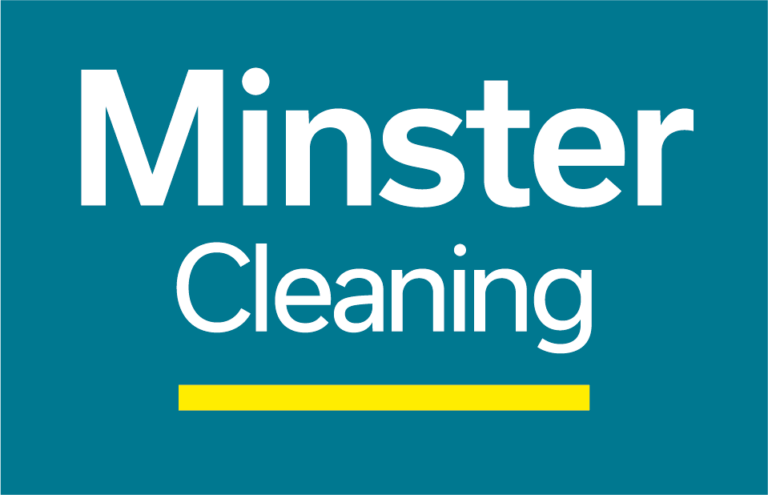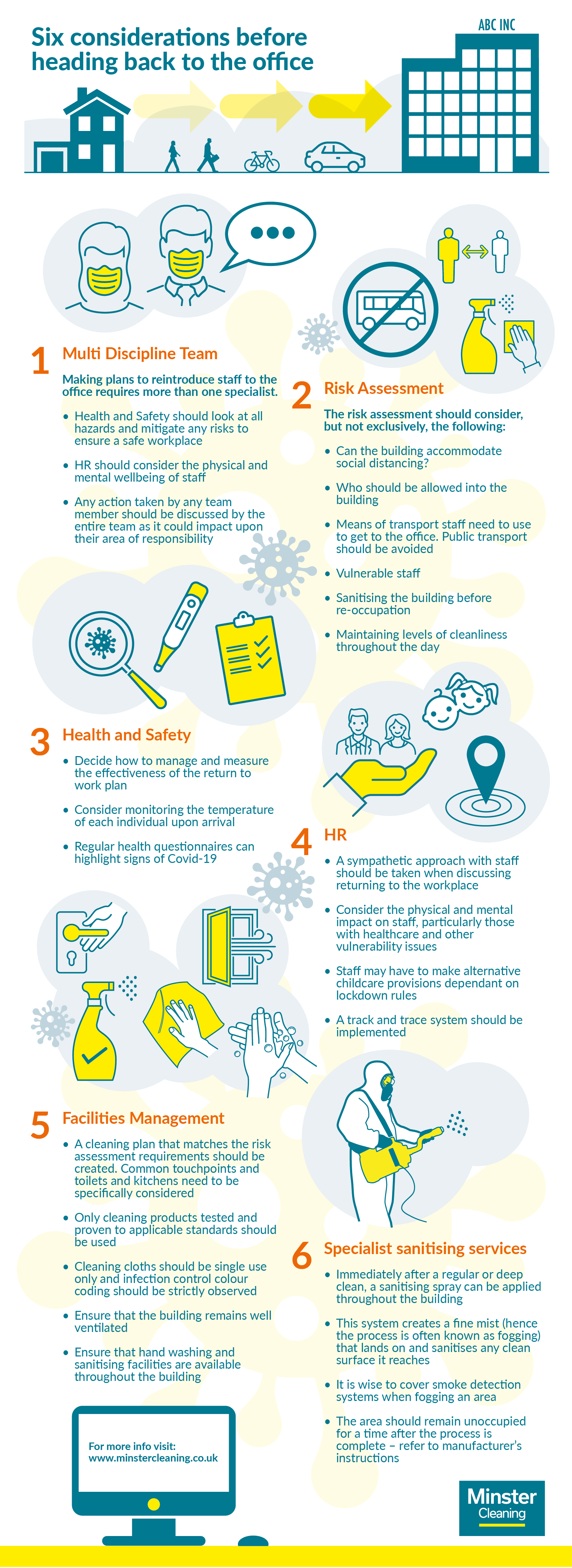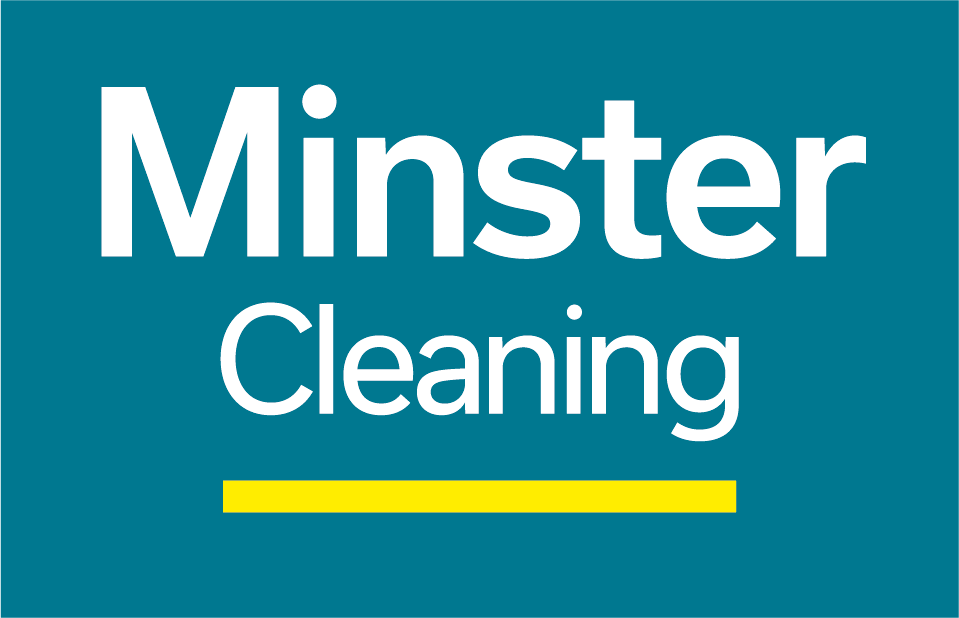If your organisation is currently working remotely there may come a time when you decide, for organisational reasons, to return to working from the office. Before you do, consider these key factors.
1. Multi discipline team
Making plans to begin reintroducing staff to the office requires more than one specialist. This should include, but not exclusively, the following:
- Health and Safety should look at all hazards and how reintroducing staff increases the risk. Mitigating systems need to be designed to reduce the risk to a safe level.
- HR should review the impact on staff and, in particular, those with healthcare, age or BAME vulnerabilities. They also need to consider what impact upon mental health it will have on members who may be left working from home, equally to those who now have to leave a safe environment and attend the office.
- Any action taken by any member of the group should be discussed by the entire team as it could impact upon their area of responsibility / specialism.
2. Risk Assessment – to be completed by a competent person / competent people
The risk assessment should consider, but not exclusively, the following:
- Can the building / facilities contain all staff working at a safe distance?
- Who should be allowed into the building.
- What means of transport will your staff need to use to get to the office. Buses and trains offering higher risk of infection transfer compared to walking or driving in their own car.
- Have you considered your higher risk (i.e. older staff, staff with reduced immunity systems and BAME staff members)?
- What can I do to sanitise the building before re-occupation?
- How do I maintain levels of cleanliness throughout the day?
3. Health and safety
- Decide how to manage, “police”, and measure the effectiveness of the return to work plan.
- Consider measuring and monitoring the temperature of each individual upon arrival.
- You may also use health questionnaires on a regular basis which could highlight signs of Covid-19. For example, has a staff member’s taste or sense of smell altered suddenly in the last couple of days? Has he or she developed a persistent cough? Is he or she running a high temperature?
4. HR
A sympathetic approach needs to be taken when discussing the requirement of returning to the workplace with staff members.
- Your team may have to make alternative childcare provisions which may be impossible if the region is on lockdown and working with restricted bubbles.
- Access to the site if the person does not have a car means that the employee is either going to have to walk, cycle or use public transport. This may increase the risk of introducing Covid-19 into the building.
- A track and trace system should be implemented to refer any employee testing positive for Covid-19 to the relevant authority.
5. Facilities Management
A cleaning plan that matches the risk assessment requirements should be created. Infection “hot spot areas”, such as door handles, hot desks, balustrades, toilets and kitchens need to be specifically considered.
- Only cleaning products tested and proven to applicable standards should be used. Products should be used as per manufacturers’ instructions and special note should be taken of the “dwell time” between application and removal of any cleansing chemical.
- Cleaning cloths should be single use only and infection control colour coding should be strictly observed.
- Ensure that the building remains well ventilated.
- Ensure that hand washing and hand sanitising facilities are available throughout the building.
6. Specialist sanitising services
Immediately after a regular or deep clean, a sanitising spray can be applied throughout the building. This can be applied via a canister or specialist equipment.
- This system creates a fine mist (hence the process is often known as fogging) that lands on and sanitises any clean surface it reaches.
- As the droplets can be harmful if inhaled, only properly trained and protected operators should be utilised.
- As the droplets are very tiny, no harm comes to any electrical equipment although it is wise to cover smoke detection systems when fogging an area.
- The area should remain unoccupied for a time after the process is complete – refer to manufacturer’s instructions.
Please click on the image below to enlarge





